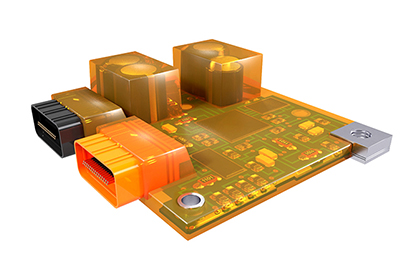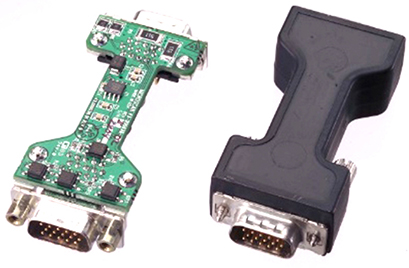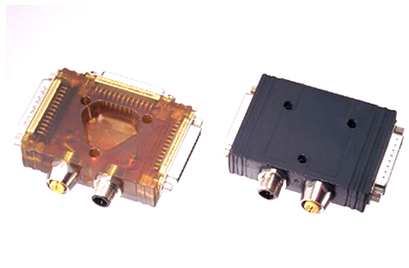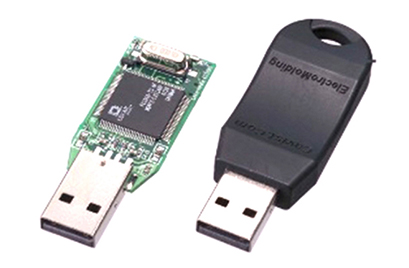With the surge in the number of electronic components being produced, low-pressure injection moulding process is being used in more and more electronic components. Today, you can find low-pressure injection moulding in a wide range of everyday applications, such as medical sensors, industrial sensors, LED lighting, mobile phones and power batteries, connector harnesses, circuit boards, microswitches, and many more, protecting sensitive electronic components from harsh environments.
Focusing on the needs of our customers is the key to our growth and Tortai is a complete system solution provider, from technical consulting, engineering, product development, tooling design and manufacturing, to OEM production.
For a wide range of markets, we offer customised services for the specific needs of each application. Diversified production requirements are met.

 |
 |
 |
| Automotive Electronic Components
Heat stabilised material, heat resistant up to 185°C. UL94 V-0 class fire resistance. Corrosion resistant material for automotive fluids, low water absorption. Easy to mould, good adhesion to a wide range of substrates. Excellent environmental resistance, impact resistance. |
Lighting/LE
Fast processing for high volume LED production. Flexible design options enrich diverse LED applications. Optically clear materials for maximum light transmission, with optional enhancements for white materials. Waterproof, UV-stabilised materials minimise the effects of long-term outdoor exposure. |
Industrial Components/Sensors
Insulating materials, moisture, water and dust resistant. Sealed connectors with strain relief, vibration and corrosion resistant materials. Materials minimise the effects of long-term outdoor exposure Single-fluid, solvent-free and compliant with environmental norms such as RoHS/REACH. |
Low Pressure Injection Moulding Process
A unique feature of low pressure injection moulding process materials is their improved process.
While traditional potting processes require eight or more steps and take around 24 hours, low-pressure injection moulding equipment combines low pressure and low temperature to enable the encapsulation of electronic components in as little as 30 seconds. This simplified process starts by pouring hot melt adhesive into the adhesive tank (vat) of the low-pressure moulding equipment. The hot melt is heated to 180°C – 230°C and then injected into a pre-designed mould into which the component is inserted prior to injection. Due to the low temperature and pressure, electronic components can be encapsulated in as little as 30 seconds and can be moved and tested immediately.
The low pressure injection moulding process is faster and more efficient than potting. The raw material for low-pressure injection moulding can be “cushioned” around the electronic component, thus shortening the process cycle time and saving raw material. It also eliminates the need for a housing to hold the potting material as in other processes.
The low pressure injection moulding process itself replaces the housing. The lower injection pressure makes it easier to mould around delicate components, while the low temperatures minimise heat exposure to sensitive electronic components.

Injection Moulding Pressure and Temperature
 |
 |
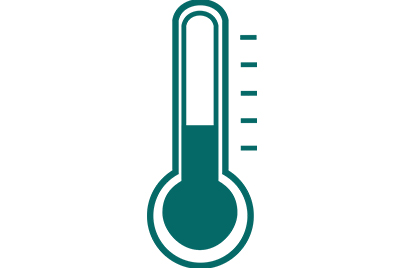 |
1.5 barInjection pressures as low as 1.5 bar ensure that electronic components are not damaged by stress. |
5sForming speeds of up to 5 seconds maximise productivity. |
150°CInjection moulding temperature as low as 150 degrees Celsius even PCBs can be easily wrapped. |
Low Pressure Injection Moulding Process Flow
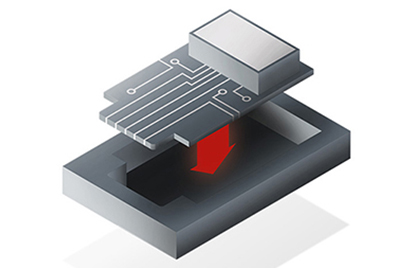 |
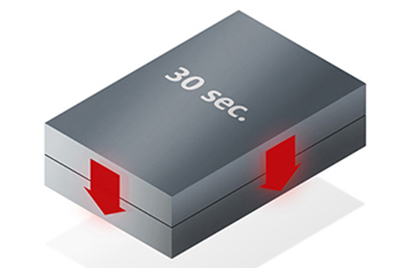 |
 |
| Step 1: Inserting Components | Step 2: Injection Moulding | Step 3: Testing |
Tortai Technical Support
We support our customers from the evaluation stage of a project to the production of the final product;
Our many years of experience in the field of low-pressure moulding enable us to provide expert advice on everything from product feasibility and application-specific issues to materials and equipment;
Regardless of the size of your project, we will provide you with the right expertise;
Changing the process of e-protection: the process is greener, easier and cheaper, improving quality and efficiency;
Low-Voltage Injection Moulding PCBA Assembly Manufacturing Case
